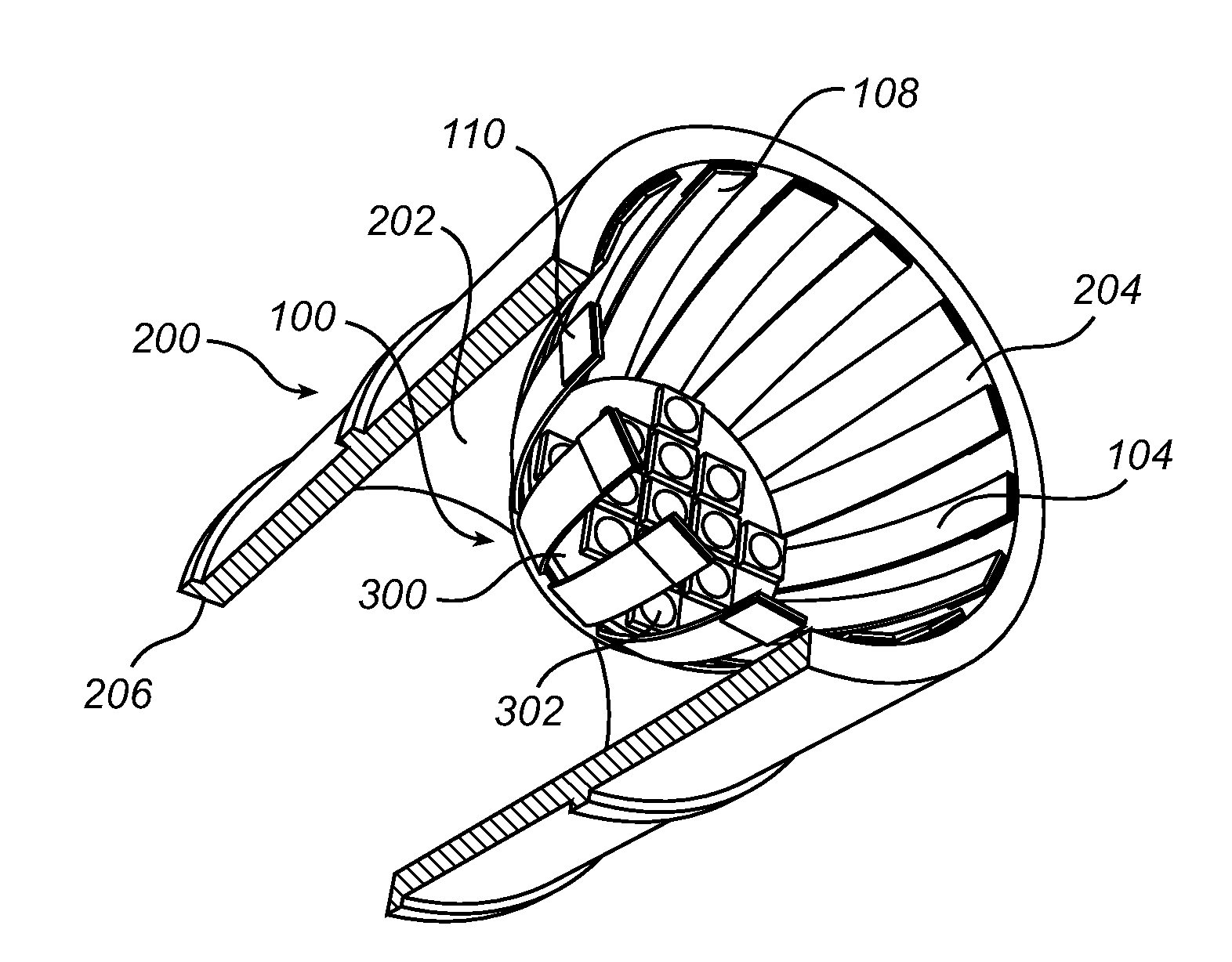Heat transferring arrangement
a technology of heat transfer arrangement and heat transfer element, which is applied in the direction of lighting and heating apparatus, semiconductor devices for light sources, and support devices for lighting and heating. it can solve the problems of long operation life of leds, and inability to provide sufficient cooling for standalone heat sinks. it can improve the thermal conductivity between the centre portion and the heat transfer element, and reduce the friction coefficien
- Summary
- Abstract
- Description
- Claims
- Application Information
AI Technical Summary
Benefits of technology
Problems solved by technology
Method used
Image
Examples
Embodiment Construction
[0035]The present invention will now be described more fully hereinafter with reference to the accompanying drawings, in which currently preferred embodiments of the invention are shown. This invention may, however, be embodied in many different forms and should not be construed as limited to the embodiments set forth herein; rather, these embodiments are provided for thoroughness and completeness, and fully convey the scope of the invention to the skilled addressee. Like reference characters refer to like elements throughout.
[0036]Referring now to the drawings and to FIG. 1 in particular, there is depicted a perspective view of the heat transferring arrangement 100 prior to being inserted in a housing 200 according to a currently preferred embodiment of the invention. As is illustrated in FIG. 1, the heat transferring arrangement 100 comprises a centre portion 102. The centre portion 102 is configured for mounting a LED 302 or a LED module 300, in the illustrated embodiment the LED...
PUM
| Property | Measurement | Unit |
|---|---|---|
| heat | aaaaa | aaaaa |
| friction coefficient | aaaaa | aaaaa |
| geometric area | aaaaa | aaaaa |
Abstract
Description
Claims
Application Information
 Login to View More
Login to View More - R&D
- Intellectual Property
- Life Sciences
- Materials
- Tech Scout
- Unparalleled Data Quality
- Higher Quality Content
- 60% Fewer Hallucinations
Browse by: Latest US Patents, China's latest patents, Technical Efficacy Thesaurus, Application Domain, Technology Topic, Popular Technical Reports.
© 2025 PatSnap. All rights reserved.Legal|Privacy policy|Modern Slavery Act Transparency Statement|Sitemap|About US| Contact US: help@patsnap.com



